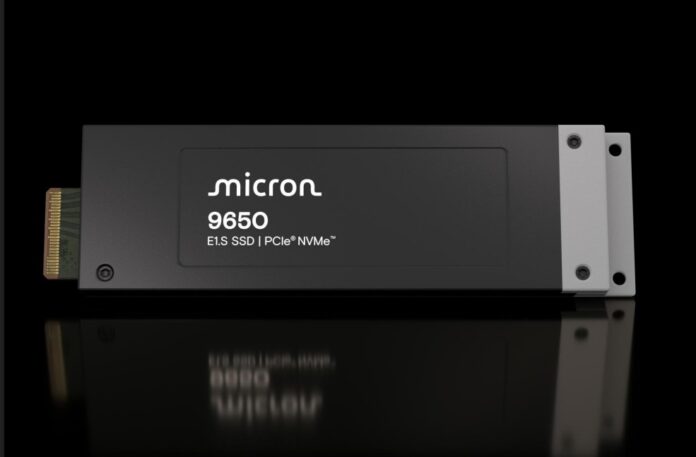Micron announced a trio of SSDs as we get into the announcement season ahead of FMS 2025. One is a new PCIe Gen6 SSD, the Micron 9650 designed for AI servers. There is then the Micron 6600 ION scaling up to 122TB. Finally, there is the more mainstream Micron 7600 PCIe Gen5 SSD.
Micron 9650 PCIe Gen6 SSD
Starting with the big one, the Micron 9650 is a PCIe Gen6 NVMe SSD. There are both Pro and Max variants. Capacities scale to 30.72TB.
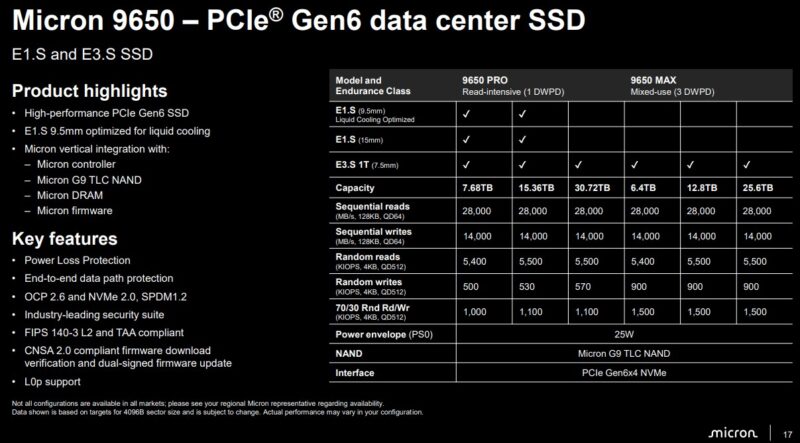
Just to give some sense of scale, the new SSDs are capable of 28GB/s of sequential read and 5.5M random read IOPS, putting them well beyond PCIe Gen5 SSDs in terms of speed.
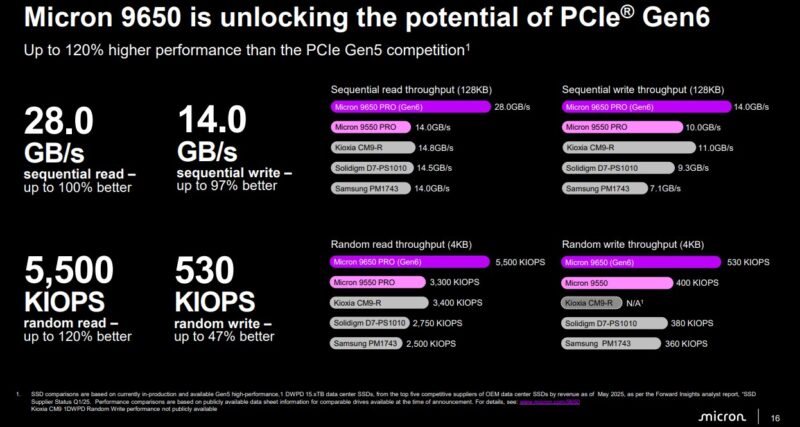
The drives are also being noted as being liquid-cooling ready. For next-gen AI systems, the SSDs are liquid-cooled to help remove fans from the AI servers. We showed this Liquid-Coolable NVMe SSD Design demo previously, but that spring-loaded coldplate requires SSDs to deliver heat towards the coldplate side. Micron has done this work. With the upcoming Blackwell B300 generation being PCIe Gen6, this is a big deal in the industry.
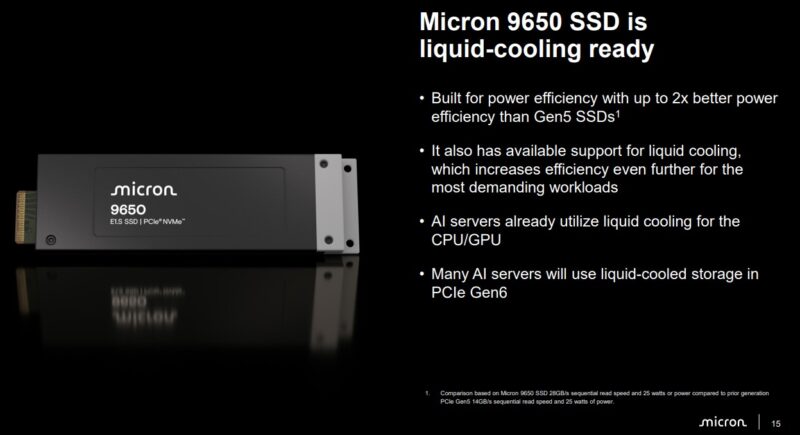
Micron also tested this with an Astera Labs Scorpio PCIe Switch.
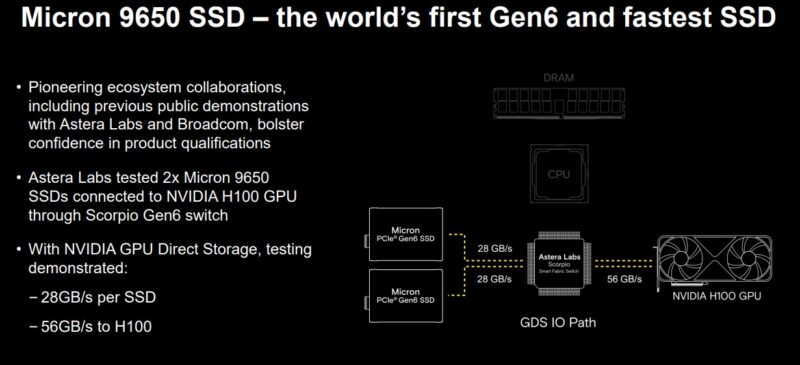
Something big here is that there is no longer U.2. U.3 was relatively short-lived for the tri-mode controllers, but from what we understand, U.2 signaling is too much of a challenge, so we expect PCIe Gen6 SSDs to take over in 2026 generation servers and beyond.
We have been saying EDSFF is coming for U.2 and M.2, and PCIe Gen6 will be the catalyst.
Micron 6600 ION 122TB SSD
The Micron 6600 ION is designed for PCIe Gen5 servers. With 30.72TB to 122.88TB of capacity, these drives are designed to offer a capacity tier for AI data centers.
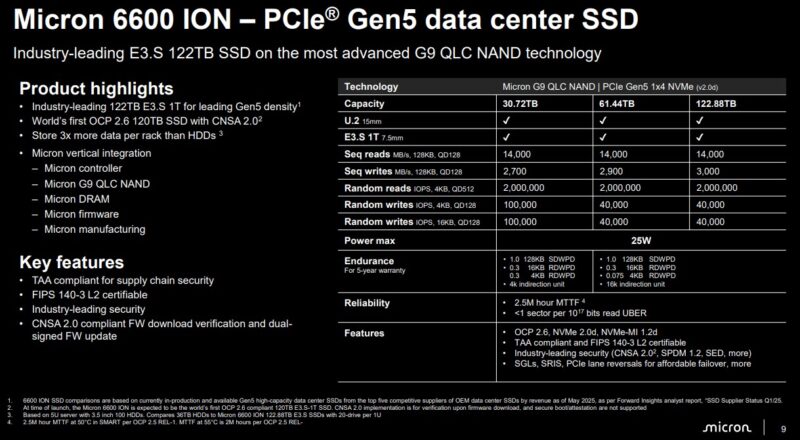
Micron says that the E1.S 122.88TB drive is denser than the U.2 at 122.88TB drives, and much denser than hard drives. This is designed as a PCIe Gen5 drive and to be significantly faster than the Solidigm D5-P5336 122.88TB NVMe SSD we reviewed.
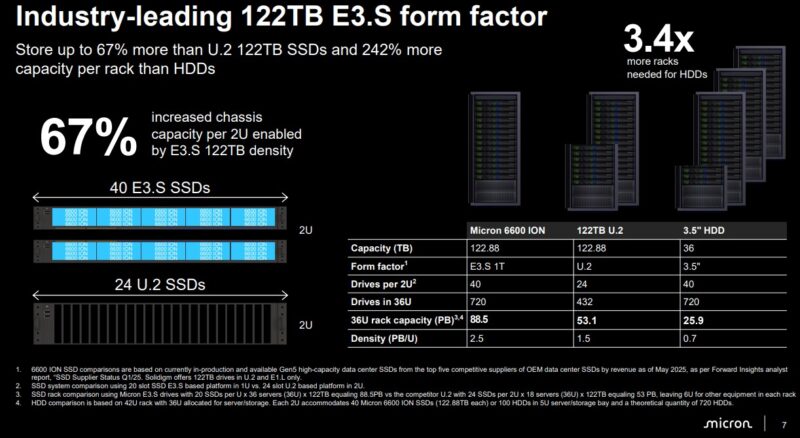
We have seen the recently announced Kioxia LC9 SSD hit 245.76TB of capacity in a single U.2 drive. So that would be denser than the 6600 ION, but Micron thinks it has a performance advantage.
Micron 7600 SSD
For the mainstream PCIe Gen5 NVMe SSD market, the Micron 7600 has both Pro and Max variants. Pro drives in Micron’s naming mean 1 DWPD while Max means 3 DWPD these days. Usually, the 3 DWPD gives higher write endurance and also performance at the expense of capacity.
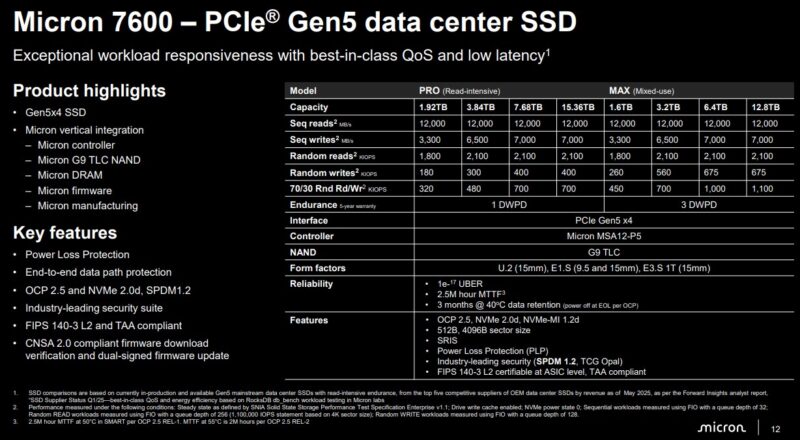
As a new generation of PCIe Gen5 NVMe SSD, Micron, as we would expect, says that its new drive is faster than its competitors’ older drives. What is not there is also the capacity side. We recently tested Kioxia CD8P-R 30.72TB PCIe Gen5 NVMe SSD, and that is twice as dense as the lower DWPD Micron 7600 Pro. Still, the largest capacities in this class of drive tend to be lower volume. In the Micron ION segment, it is the opposite, as the highest density drive tends to win.

Something that is interesting is that Micron is targeting smaller capacities. These drives go down to 1.92TB and 1.6TB. Many vendors are starting to drop sub-3.2TB capacity drives as the underlying NAND density has increased.
Final Words
This was a lot. Micron has high-performance drives in the Micron 9650 PCIe Gen6 SSD. It has capacity covered with the Micron 6600 ION (although we hope a follow-up 245TB drive is coming as mentioned in the press release.) Then there in a mainstream SSD option in the Micron 7600.
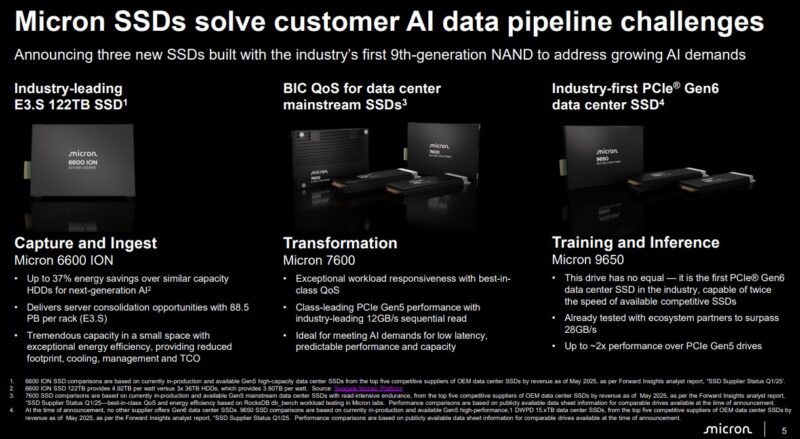
Three announcements all at once, it must be FMS season!
Source link
